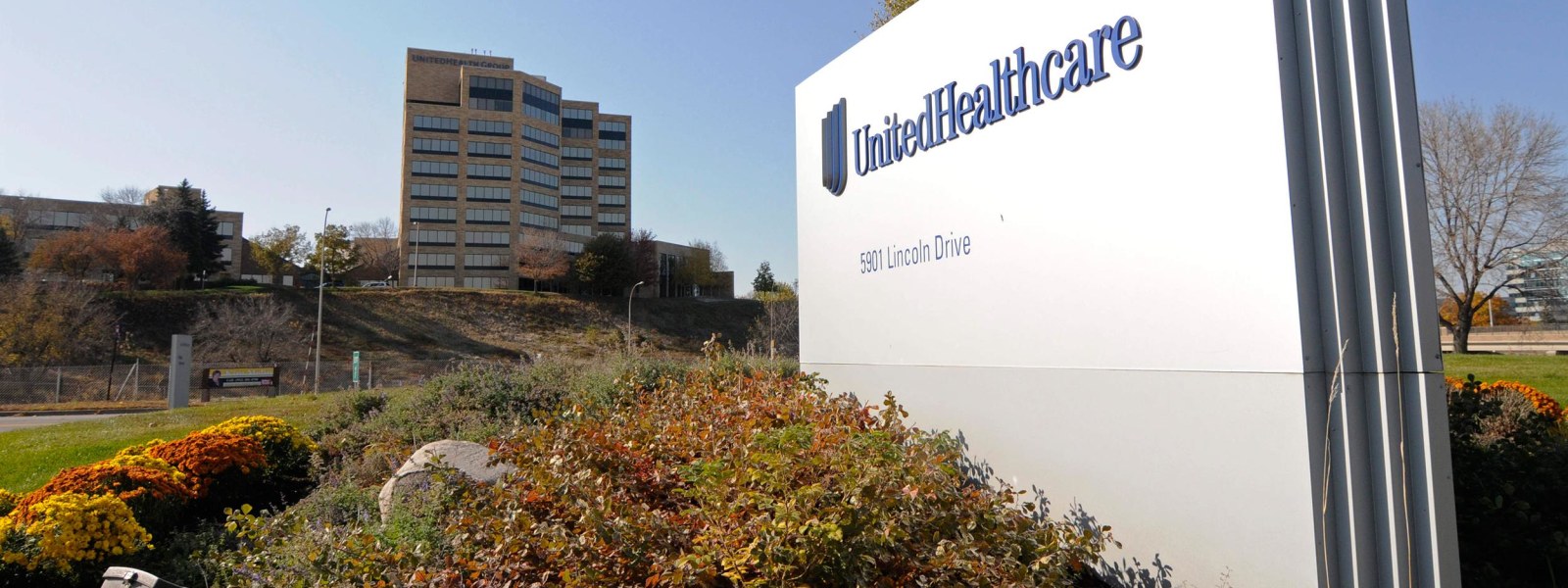
Jim Mone / AP file 4 days
Investigations
Billions in Medicare Advantage Overcharges Probably Gone Forever
By Fred Schulte, Center for Public Integrity
Billions in Medicare Advantage Overcharges Probably Gone Forever
By Fred Schulte, Center for Public Integrity
This story was published by The Center for Public Integrity, a nonprofit, nonpartisan investigative news organization in Washington, D.C.
Four years ago, Medicare auditors came to an alarming conclusion: the federal government shouldn’t have paid a half-dozen insurance plans hundreds of millions of dollars to treat seniors in especially poor health.
The findings signaled that billing errors could be deeply rooted within private Medicare Advantage plans -- which contract with the federal government to care for nearly 16 million elderly Americans -- and that these abuses could be wasting taxpayer dollars at a ferocious clip.
Medicare expects to pay higher rates for legitimately sicker people who may require expensive care. But the auditors concluded that all six health plans they visited couldn’t justify the money they took in for 40 percent or more of their patients. That triggered whopping overpayments which auditors pegged at nearly $650 million for 2007 alone -- just for those six plans.
One major Texas health plan was paid to care for a man it said had brain cancer. But his medical file showed he was treated for an enlarged prostate, a common ailment that didn’t merit any added payment, auditors wrote.
In Arizona, a health plan collected thousands of dollars from Medicare to treat congestive heart failure in a patient seen for knee pain, according to auditors. In Pennsylvania, a person treated for blurry vision was charted as having serious heart disease. The audits referred to these errors as “unsupported diagnosis coding.”
It took years for the Department of Health and Human Services inspector general to publish those findings; and government officials have yet to pry back more than a tiny fraction of the disputed money, the Center for Public Integrity has learned.
And despite the bundle of taxpayer dollars on the line, the HHS inspector general didn’t do any more audits, and decided in 2013 to scrap similar future reviews as part of a budget cut.
NEW AUDITS MAY RECOVER MISSING MILLIONS — OR NOT
Robert Trusiak, a former Department of Justice prosecutor, said that “at the very least” federal officials should have demanded refunds from the health plans and lowered the boom on any plan caught “gaming” Medicare.
“The dollars here are huge,” he said.
No company has admitted intentionally “gaming” the system, and the audits do not attempt to assign blame.
The money’s not likely to be returned. The Center for Public Integrity’s yearlong investigation of the Medicare Advantage industry found that federal officials over the past decade have missed multiple opportunities to corral tens of billions of dollars in overcharges and other billing errors tied to a complex payment formula known as a “risk score.”
Read the Center for Public Integrity’s version of this article.
Health plans collect medical data that is used to compute the health risks for each patient enrolled, but there’s been little to deter plans from increasing the resulting “risk scores.”
When risk scores overstate a patient’s illness, the plans make more money from Medicare. There’s little chance patients or the public will find out when this happens because federal officials have kept most audit results confidential.
Washington health-care lawyer Thomas C. Hill said insiders have known of “significant problems” with Medicare Advantage billing practices for years. But they’ve received scant public notice because neither industry nor government has much to gain by letting the secrets spill out, he said.
“The government isn’t in the best light when there’s that high an error rate,” Hill said. “They are reluctant to expose that to the world.”
Click here to see the Center for Public Integrity's Medicare Advantage explainer.
Officials from the HHS IG's office defended the findings in the half-dozen audits, but declined to comment beyond that. Officials from the Centers for Medicare and Medicaid Services (CMS), the HHS agency that actually runs the program, declined to comment at all, despite numerous requests.
Click here to see how changes to a risk score can boost costs.
Big Scores
Medicare unveiled risk scores in 2004. Congress wanted to systematically pay more for people with chronic or costly diseases, such as cancer and diabetes with complications, and less for those in robust health. Lawmakers also hoped to cut Medicare waste and billing abuse that can occur when doctors and hospitals are paid for each and every thing they do, a practice known as “fee for service.”That can give them a financial incentive to do more to earn more.
Medicare adjusts the risk scores used in the Medicare Advantage program based on more than 70 conditions and their severity. That can mean thousands of extra dollars over the course of a year to treat a single patient.
Take depression. Mild and temporary feelings of sadness and hopelessness don’t increase Medicare payments. But if that depression and other symptoms linger for at least two weeks it may be classified as “major depressive disorder” and generate hundreds of dollars in payments to the Medicare Advantage plan to treat that patient.
Patients never know how their health is rated because neither the health plan nor Medicare shares risk scores with them -- and the process itself is so arcane and secretive that it remains unfathomable to many health professionals.
Health plans that cheat can face civil or criminal penalties, but federal officials largely trust them to collect medical data for risk scores accurately for the millions of seniors they sign up.
CMS conducts periodic audits -- known as Risk Adjustment Data Validation, or RADVs. But CMS has yet to impose major penalties when it detects inflated risk scores in those audits, though it may do so for the first time later this year. Still, CMS moves so sluggishly that if the past is a guide, at the rate they’ve been working it will likely take a decade or more to review hundreds of current Medicare Advantage contracts, records show.
CMS is but one part of the giant Health and Human Services Department. The HHS Office of Inspector General is supposed to backstop CMS and act as a watchdog to make sure that taxpayer dollars aren’t misspent. But CMS and the HHS OIG are in conflict over how best to conduct these audits. Neither would comment on the process.
Meanwhile, taxpayer losses pile up by the billions.
Based on its own sampling of data from health plans, CMS has estimated that faulty risk scores triggered nearly $70 billion in what officials deemed “improper” payments to Medicare Advantage plans from 2008 through 2013. Most were overcharges sparked by health plans “upcoding” -- overstating how sick their patients were­ -- or failing to document diseases they were paid to treat, according to CMS. Overall, Medicare paid the health plans about $135 billion in 2013.
But which health plans consistently have been overpaid -- and by how much -- remains under wraps. While CMS audits have detected billing errors in 30 percent or more of the patient files reviewed, the agency cloaks the identities of health plans audited and the results. CMS officials declined a Center for Public Integrity request to make its audits public or discuss the process. Last month the Center sued in an effort to obtain those audits.
Click here to read about the lawsuit.
The CMS policy means that the six audits by the HHS inspector general -- which does publish its findings -- stand as the only public account detailing Medicare Advantage billing practices over the past decade.
Those inspector general’s audits began late in 2008. Drafts weren’t presented to the health plans until two years later. The eye-popping findings didn’t begin to dribble out until 2012 -- even though Medicare paid the health plans hundreds of billions of dollars in the interim as enrollment began to surge.
Dr. Todd M. Husty, a Florida physician and medical billing consultant, said he was “shocked” that the HHS inspector general’s office failed to step up its audits given the early findings. “They could have cleaned this up four years ago,” he said. The health plans “were kind of sailing along not looking at how accurate their risk scores were because nobody ever dinged them.”
Patrick Burns, a co-director of Taxpayers Against Fraud, a Washington-based group, said that only stiff penalties will protect taxpayers from getting fleeced.
“The billing system has failed and needs to be rejiggered,” he said, adding, “Even when we catch it, nobody gets spanked.”
HHS Inspector General’s Office spokesman Donald White wouldn’t comment on the audits except to say that the office “stands by” its findings.
White conceded that further risk-scoring audits are “indefinitely on hold” because of the expense of paying medical coders to scrutinize patient files. Late last year, the office told Congress it would need to cut back on its workload to save money.
That decision leaves CMS as the only government entity watching over Medicare Advantage billing, and its findings are not made public.
The industry denies that the health plans overbill and notes that it has worked with federal officials to revamp recordkeeping practices.
“Medicare Advantage plans are working hard to comply with CMS requirements and we have every reason to believe these activities will be effective,” said Clare Krusing, director of communications of America’s Health Insurance Plans, the industry trade group.
Click here to see how risk scores changed.
Padded Bills
Under the traditional Medicare program, launched in 1966, the government pays doctors and other medical professionals according to the fee-for-service concept.
Congress first carved out a significant role for private health plans in Medicare in the 1980s.
Lawmakers decided Medicare would pay plans a monthly rate for each person they enrolled. They expected that would save money by curbing waste and unnecessary medical care that can occur in fee-for-service Medicare. Congress also reasoned that removing the incentive to overbill would help control fraud. Many lawmakers also favored a medical insurance option for seniors run by the private sector.
In 2003, Congress tried to boost the program’s fortunes by renaming it Medicare Advantage and phasing in risk-based payments to the private plans, starting in 2004. The expectation was that health plans wouldn’t shy away from taking sicker patients so long as they were paid fairly.
Medicare tried to predict the costs of treating a range of diseases, including those likely to require expensive treatment and adjusted payments upward for them. However, government officials paid little attention to warnings from some researchers that the strategy would spawn a whole new form of costly billing abuse that could prove immensely difficult to stamp out, government records reveal.
Quite simply: as Medicare began paying more for “sicker” patients, Medicare Advantage health plans began reporting their patients were sicker than the Medicare population as a whole.
Risk scores rose twice as fast for people who joined a Medicare health plan as for those who didn’t. A July 2004 CMS study of nine plans found inflated risk scores for a third or more of patients. A second study done for CMS opined that the upward trajectory could most logically be explained by Medicare Advantage plans chasing dollars, not by any decline in patients’ health.
In February 2008, CMS officials amplified that point, writing that it was not “reasonable to assume” that people in Medicare Advantage got sicker faster than seniors who chose standard Medicare coverage.
Since then, dozens of academic papers and government reports have probed the rising costs of the Medicare Advantage option. Some cite lax government oversight of risk scores, including persistent “upcoding,” as the main culprit.
The Center for Public Integrity’s analysis of Medicare Advantage billing data from 2007 through 2011 confirmed that risk scores rose more than twice as fast as the government-estimated average for people in standard Medicare in some plans in at least 1,000 counties nationwide.
CMS, starting in 2010, cut risk scores across the board, reducing payment rates to Medicare Advantage. But critics argue that even as the health insurance industry launches an intense lobbying campaign to shelve sharper rate cuts, it remains overpaid.
“That’s a systematic problem that has to be addressed,” said Dr. Robert Berenson, a former member of a panel that advises Congress on Medicare spending. He added that the method of payment leaves “a lot of room for bad actors.”
Click here to read the first part of the Center’s Medicare Advantage investigation.
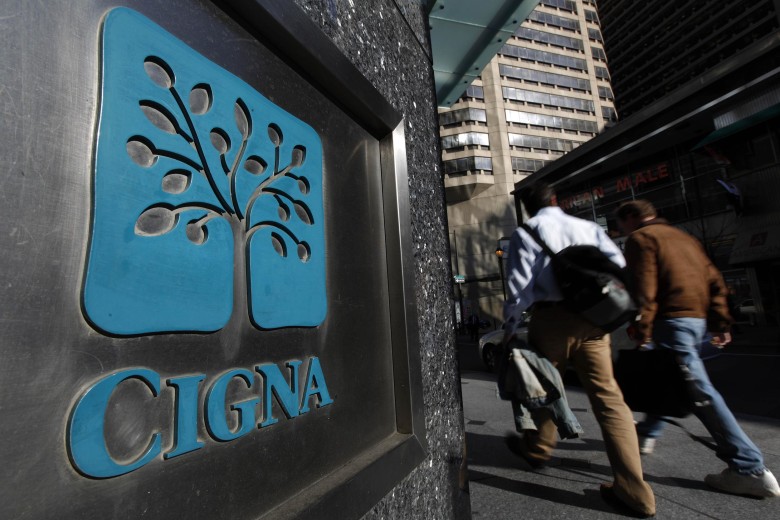 Matt Rourke / AP file
Matt Rourke / AP file
Pedestrians walk past the headquarters of the health insurer Cigna Corp. in in Philadelphia.
Industry Pushback
While HHS inspector general auditors sat on their findings for years, the industry was pushing back hard behind the scenes, trying to discredit the findings or keep them hidden, records show.
Excellus, a Rochester, New York based health plan attacked the auditors’ methodology in a December 2010 letter to an Inspector General’s Office official.
The health plan said the auditors’ finding that it was overpaid by about $41.6 million in 2007 was “inflated and based on flawed data.” The plan also blamed any deficiencies in record keeping on its doctors. An Excellus spokesman told the Center for Public Integrity that the health plan settled the matter in December 2013 by paying the government $157,777. “[The government] recognizes this is an industry-wide issue,” said the Excellus statement, “and it is adjusting its audit approach accordingly, while continuing to encourage health plans to work with the provider community to improve documentation of claims and diagnoses.”
PacifiCare, a division of insurance titan UnitedHealth Group, the nation’s largest Medicare Advantage contractor, hotly disputed audit findings for its plans in California and Texas.
Auditors had deemed the risk scores for 45 of 100 California patients “invalid” because medical records didn’t verify they had been treated for the conditions claimed. One patient who had knee replacement surgery was listed as having blood poisoning. While the medical chart confirmed the operation, no care for blood poisoning was evident.
United Health Group fired back in a September 2010 letter that HHS had “exceeded its authority.” In a second letter that year, the company criticized the audit methods. It demanded that the results be kept confidential while executives contested the audit finding that the plans could owe the government more than $539 million for 2007.
In the end, the inspector general’s review of six plans estimated that Medicare overpaid a total of nearly $650 million just for 2007, the only year studied. The inspector general lacked the power to demand refunds, but it recommended that CMS work out how much the health plans should return to the federal treasury. The inspector general did not pursue a broader investigation into the high error rates -- and still hasn’t. And CMS sided with the industry and ignored the inspector general’s recommendations.
A note on the Center's methodology.
Rules ‘Flawed’
The health plans contend that the audit process can be subjective and unwieldy because they must scramble to track down records of medical visits years after they occurred. Sometimes, doctors retire or move, making it hard to locate patient files, they say.
Several pointed out that they shouldn’t be penalized when doctors fail to keep adequate records. They also argued that no billing formula can fully predict who will require expensive medical care and they can lose money when risk-based payments don’t cover their costs.
Cigna Healthcare of Arizona, for example, disputed the audit finding that it was overpaid by more than $23 million for 2007. Calling the audit standards “fatally flawed,” CIGNA said it actually lost about $800,000 that year treating the 100 patients whose files auditors sampled.
The industry also argues that just because medical auditors can’t find a record of a disease doesn’t mean patients don’t have it, or that the condition isn’t affecting their health and treatment plan. Doctors are trained to detail what they did during an office visit, but may not dwell on all the underlying medical conditions that impact treatment decisions, they say.
HHS auditors counter that they can only rely on the medical record presented to them. If that record fails to substantiate a specific diagnosis and treatment, then they count it as an overpayment and want a refund. Under their contracts with the government, health plans are responsible for assuring these records are accurate.
James Cosgrove, who directs the health care division of the Government Accountability Office, the watchdog arm of Congress, said that federal health officials have yet to answer a basic question: did the health plan fail to provide the service or did it simply not document it properly?
“That’s something we would be very interested in looking at,” Cosgrove said.
Sympathetic ear
While the industry clashed with the Inspector General’s Office, it found a sympathetic ear at CMS. Rather than hammer the health plans for chronic billing blunders, the agency has mostly shrugged them off or settled for recouping minimal sums.
In February 2012, CMS officials decided to forgive overpayments to Medicare health plans made from 2008 to 2010. The surprise decision brought cheers to corporate boardrooms, according to John Gorman, a former federal health official who now advises Medicare Advantage plans.
Gorman said CMS decided that “the sins of the past are absolved.”
“They didn’t have to do that, and we, hundreds of CFOs and bankers up and down Wall Street and Madison Avenue, are thankful they did,” Gorman added.
The CMS decision certainly spelled relief for Coventry Health Care in Bethesda, Maryland, which operates in more than a dozen states and is owned by insurance giant Aetna. Within a week of the decision, the company freed up $133 million it had held in reserves to cover any potential liability from flawed risk scoring, according to its financial statements.
Humana Inc., which disclosed to securities regulators that it was the subject of six CMS payment audits for 2007, declined to say how much the audits cost the company, but noted the results were not significant financially.
CMS ignored the HHS inspector general’s finding that the six health plans it audited had been overpaid by an estimated $650 million for 2007. CMS settled five of the six audits for a total repayment of just over $1.3 million, the Center for Public Integrity confirmed.
Further, CMS decided not to chase after overcharges from 2008 through 2010 even though the agency estimated through sampling that it made more than $32 billion in “improper” payments to Medicare Advantage plans over those three years. CMS did not explain its reasoning.
CMS took that stance just a month after congressional auditors criticized the agency for failing to crack down on Medicare Advantage plans that overbilled.
CMS officials also decided in 2012 to conduct only 30 of its own confidential RADV overpayment audits each year. That’s less than a third of the number the agency said it would do in 2009. At that time, the Obama administration had promised to ramp up efforts to recoup overpayments to help fund the Affordable Care Act.
At that rate, it would take CMS more than 15 years to review the hundreds of Medicare Advantage contracts now in force.
CMS also helped out the industry in other ways likely to limit recoveries. The agency agreed to write off a portion of overpayments to account for doctors’ coding differences and mistakes, a concession insiders said was a big break for the health plans.
CMS officials also declared an amnesty period for voluntarily disclosing improper risk scores for which plans had been overpaid, much like a library suspending fines for a short period for the return of overdue books.
Trusiak, the former federal prosecutor, said CMS officials yielded too much ground to the industry and that these concessions will “restrict the amount of money recouped” by taxpayers.
Still, it’s not clear that the health plans will continue to slip the hook.
After years of delays and deliberation, CMS now intends to “extrapolate” its RADV audit findings for the first time later this year. Auditors will presume that the percentage of billing errors they find in a sampling of 200 patients exists throughout a plan’s full membership. That could potentially cost a large health plan millions of dollars or more.
Former CMS official Thomas E. Hutchinson, who helped design the RADV audit process and now advises health plans, said that small penalties weren’t taken seriously by the industry. In some cases, he said, it cost health plans more to retrieve medical records to buttress their billing than accepting the small CMS penalty for failing to do so.
Now, he said, health plans could face a “nuclear option” if they can’t justify their billings. “We either have too little a stick or too big a stick,” Hutchinson said.
CMS officials have said they expect to recover $370 million in overpayments as a result of their 30 audits that start this year. Though that’s significantly below earlier predictions, it still caught the industry’s attention.
Both Humana and UnitedHealth Group, the nation’s two biggest Medicare Advantage plans, have told investors they could be ordered to cough up significant refunds, according to Securities and Exchange Commission filings. Humana reported to the SEC in November that “certain” of its contracts would be audited. It offered no details. Other plans also warned investors of a “material effect” on their finances, the SEC filings show.
In January, CMS threw another curve by proposing regulations that would require health plans to return overpayments they had received dating back six years. CMS did not explain how that proposal was consistent with its earlier decision to forgive overpayments from some past years..
The regulations also clear the way for other divisions of HHS -- presumably the Inspector General’s Office -- to conduct more Medicare Advantage audits.
Whether the office will actually take up the challenge is anyone’s guess. It has already gone on record saying it lacks the funding to undertake comprehensive risk score audits, which it has set as a priority every year since 2008. In a video presentation outlining their investigative priorities for 2014, OIG officials made no mention of Medicare Advantage.
The inspector general’s audits are far more threatening to the industry than those done by CMS. The inspector general’s audits are widely distributed and can draw media attention as well as demands for reform in Congress.
Absent the inspector general’s review, it’s doubtful the public will ever get a full accounting of how accurately individual Medicare Advantage plans spend billions of tax dollars.
Burns, of the taxpayer rights group, said federal officials need to get serious about protecting tax dollars and keep from being “outgamed” by the health care industry.
“You need an electric fence for these cows,” he said. “As soon as you touch it you get nailed.”
The Center for Public Integrity is a nonprofit, nonpartisan investigative news organization in Washington, D.C.
Billions in Medicare Advantage Overcharges Probably Gone Forever
First published June 4th 2014, 6:02 pm
Fred Schulte, Center for Public Integrity
Schulte has received the George Polk Award, two Investigative Reporters and Editors awards, three Gerald... Expand Bio
http://www.nbcnews.com/news/investigations/billions-medicare-advantage-overcharges-probably-gone-forever-n122911



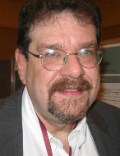
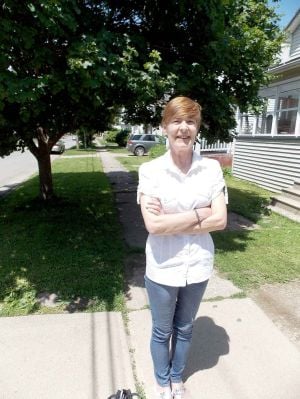
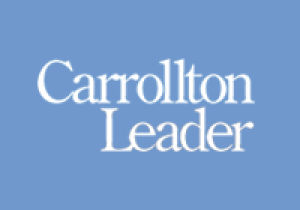




 Matt Rourke / AP file
Matt Rourke / AP file 